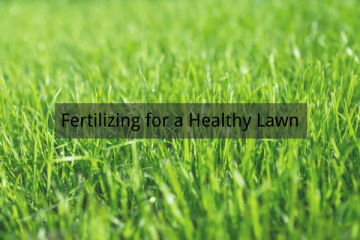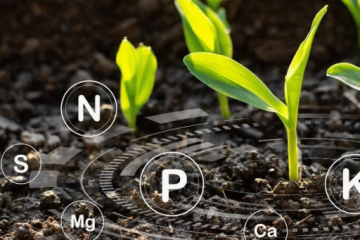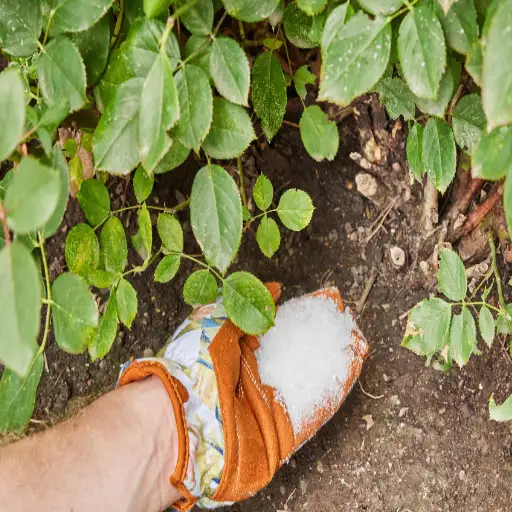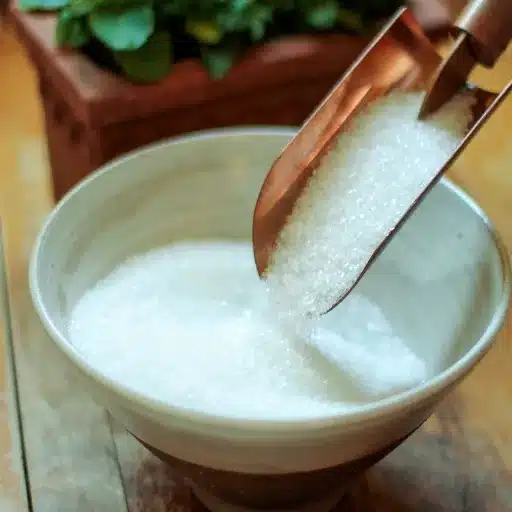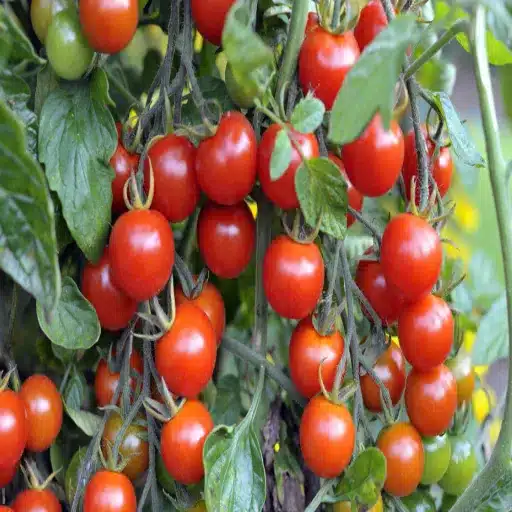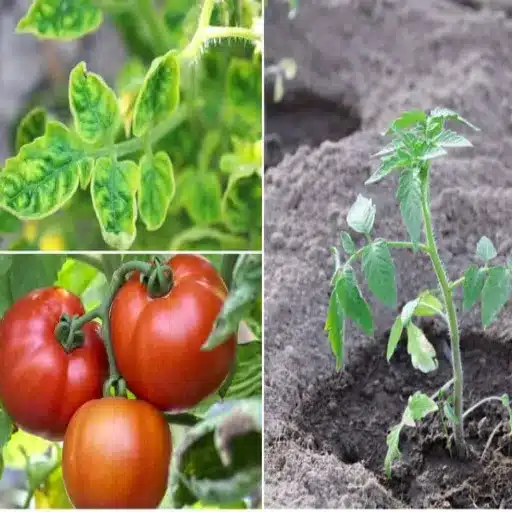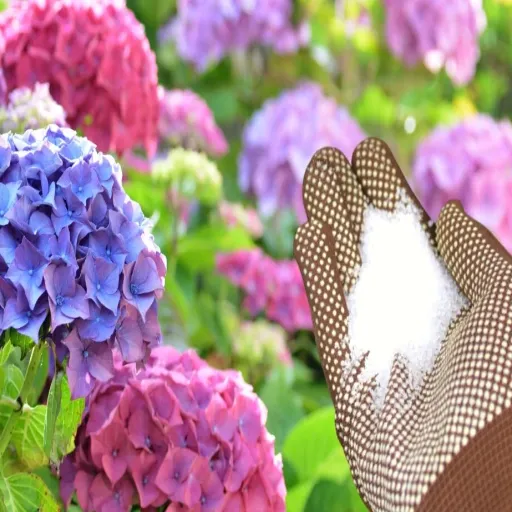Gardening enthusiasts and professional growers alike are constantly seeking ways to enhance plant health and maximize growth. One of the simplest yet most effective tools available in plant care is Epsom salt. Renowned for its versatility, Epsom salt is more than just a household remedy—it’s a powerful resource that can transform your garden with minimal effort. But what makes Epsom salt so beneficial for plants? And how can you incorporate it into your gardening routine safely and effectively? This comprehensive guide will break down everything you need to know, from the science behind Epsom salt’s benefits to practical application methods, equipping you with the knowledge to nurture thriving plants and a more vibrant garden.
What is Epsom Salt and How Does it Benefit Plants?
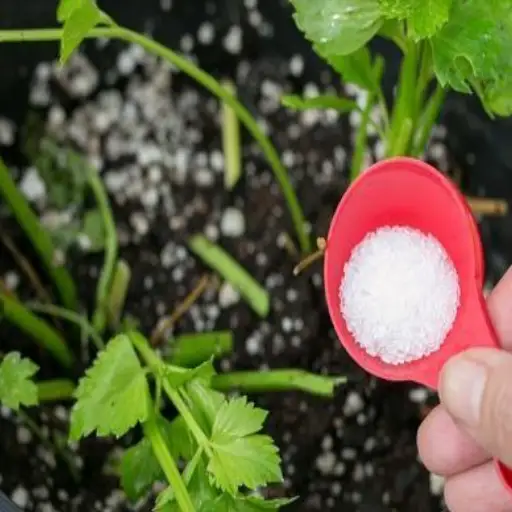
Understanding Epsom Salt for Plants
Epsom salt, or magnesium sulfate (MgSO₄·7H₂O), is a compound that has sulfur, oxygen, and magnesium. It occurs in nature. Plants’ chlorophyll (the molecule that helps them capture energy from sunlight) contains magnesium, which means that magnesium is critical for photosynthesis. At the same time, sulfur is critical to the production of some amino acids and proteins that are required for the growth and hardiness of plants.
Epsom salt enables optimal performance of plants when applied correctly and helps in the promotion of nutrient absorption. In the case of a deficiency in magnesium and sulfur, two essential elements in the soil for healthy foliage and even flowering, Epsom salt can work wonders. Plants like tomatoes, peppers, and roses tend to greatly benefit, given that this class of plants has greater requirements for magnesium. For soil that lacks sulfur and magnesium, recent studies show that adding these two nutrients emphasizes the health of plants and flowers. Also, enabling greater hardiness and green foliage.
To make good use of Epsom salt, one must be careful of moderation and dosage. Overuse can have negative effects on plants as well as the soil. It can be integrated into the soil or dissolved in water to create foliar sprays. It can also be added in small, controlled doses to already existing gardens. Generally, it is best to use 1 tablespoon of Epsom salt dissolved in a gallon of water and then sprayed or poured at intervals of a few weeks. One must pay close attention to the conditions concerning the plants, as excess magnesium can hinder the absorption of other critical nutrients like potassium and calcium.
Magnesium and Sulfur: Essential Nutrients for Growth
Magnesium and Sulfur are essential for the physiological and biochemical functions of plants. The presence of magnesium aids alongside sulfur’s assistance during the core metabolic and growth functions of the plant. Being a crucial element of chlorophyll, magnesium enables photosynthetic activity within the plants, allowing conversion of light to energy. Plants serve as self-sustaining organisms and require other fundamental nutrients like nitrogen and phosphorus, which also need to be absorbed through magnesium-aided pathways during photosynthesis.
Magnesium is defenseless without the formation of several other chemicals, like proteins. He is encompassed in many vital components of metabolic pathways, including sulfur-containing amino acids, structured proteins, and various enzymes. Chloroplasts also largely assist in reducing stress and improving farmers’ overall crop health. His works don’t end there, he is also the main gubernatorial figure responsible for forming sulfur-bearing glucosinolates, which are the reason behind the lesser nutritional quality of the crops.
Based on the joint action of magnesium and sulfur, single soil types are placed in defined clusters by how much of these elements are missing. If the lacking element is found in proximity, the plant’s growth rate is extensively heightened along with the yield, performs deformative changes, and a significant increase in chlorophyll productivity while reducing yields. Changes of this specific type largely act like deflation on plants by greatly improving agricultural yields.
How Epsom Salt Can Help with Nutrient Deficiency
Magnesium is vitally important in photosynthesis because it is part of the chlorophyll molecule. Thus, magnesium enables a plant to take in sunlight and use it. Plants also use sulfur in their metabolism for the formation of amino acids, enzymes, and vitamins, which directly determine the level of proteins and other materials synthesized
Epsom salt is a good corrective measure for magnesium-deficient soils due to its high absorption properties. It can be applied as a foliar or soil application, and even boosted dissolved Epsom Salt to achieve better results. This leads to chlorophyll density improvement, which in turn, enhances the photosynthetic capabilities of the leaves. Empirical studies show that magnesium restoration enhances the growth rate, yields, and foliage health of the plants energetically.
For agricultural technologies, combatting nutrient shortages can be aided through the application of 1-2 tablespoons of Epsom salts per gallon of water for spray application or direct application onto the soil. Research underscores that the sulfur provided through magnesium sulfate helps plant structural aid and mitigates stress on the environment on the plant on the cellular level. The combination of Epsom salt treatments alongside soil tests and corrective fertilization works towards better nutrient management for improved efficiency and crop yield.
How Much Epsom Salt Should You Use on Plants?
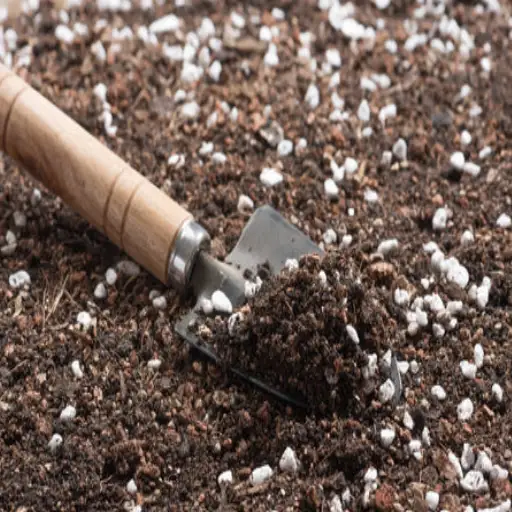
Recommended Dosage: Epsom Salt Per Gallon of Water
Typically, for most plants, a gallon of water is mixed with 1-2 tablespoons of Epsom salt, and this mixture is applied as a foliar spray or soil drench. It is wise to follow the recommended proportions, as using too much magnesium sulfate will result in nutrient imbalances or excessive salts in the soil, both of which can severely stunt growth.
For flowering plants like tomatoes and roses, using 1 tablespoon of Epsom salt in a gallon of water biweekly is more than enough to boost bloom and fruit set. In terms of lawn care, 3 pounds of Epsom salt per 1,250 square feet of grass, spread through a broadcast spreader followed by watering to improve uptake, is the common recommendation.
Soil tests should be performed to assess for other nutrients that may need to be paired with magnesium sulfate so that the supplementary magnesium sulfate isn’t rendered obsolete and does become beneficial for the intended holistic fertilization plan.
Using Epsom Salt for Different Types of Plants
- Vegetables and Herbs: Epsom salt helps vegetables and herbs that are heavy feeders, like tomatoes, peppers, and leafy greens. These plants most often suffer from magnesium deficiency, which shows symptoms of interveinal chlorosis – yellowing of the leaves between veins – and stunted growth. For tomatoes and peppers, a rough rule of thumb is to apply 1 tablespoon of Epsom salt per foot of plant height, monthly for the duration of the growing season. This can be done by foliar spraying or applying directly onto the soil after dissolving it in water. For herbs like basil and parsley, the flavor and yield are enhanced through chlorophyll and nutrient uptake by applying Epsom salt in low concentrations, about 1 teaspoon per gallon of water.
- Flowering Plants: Roses and azaleas, among other flowering plants, thrive with the addition of Epsom salt due to its ability to foster vibrant blooms and lush foliage. Roses stand to gain the most with magnesium supplementation, as it aids in color deepening and bud development. Applying 1 tablespoon of Epsom salt per foot of plant height, either as a soil drench or a foliar spray, is recommended to be done once a month. For azaleas and rhododendrons, adding 1 tablespoon of Epsom salts during the flowering cycle helps sustain vigorous growth and minimizes yellowing leaves that result from magnesium deficiency.
- Fruit-Bearing Trees and Shrubs: As with other fruit trees, Epsom salts may be beneficial for use on apple and citrus trees, as well as blueberry bushes. Magnesium is critical for the photosynthetic processes needed for producing and inflating a growing fruit’s size. For citrus trees, applying Epsom salt to the plants with water at the rate of 2 tablespoons per gallon, every few months, helps enhance the sweetness and yield of the fruits. Generally, berry bushes respond well to the use of 1 teaspoon of Epsom salts per square foot of soil during their active growth period. For any application, accurate dosage evaluation is essential according to the levels of magnesium content within the soil, and through meticulous testing.
- Household and Potted Plants: Household or potted plants can also make use of Epsom salt. This is trouble because potted plants often have limited amounts of soil, which leads to some form of nutrient deficiency. As such, potted plants are to be watered with magnesium-enriched solutions. For dosage instructions, mix 2 teaspoons of Epsom salt in a gallon of water and use this mixture to water the indicated plants once a month. This will work well with tropical houseplants such as palms and ferns since they need constant nutrients for growth.
While applying Epsom salt for varies plants, always be sure to take into consideration the soil properties, the type of plant and the surrounding environment to make sure the application of Epsom salt is purposeful and practical. Application of Epsom salt is known to create nutrient imbalance within the soil so measuring plant health for balance alongside precise measurement is important for any fertilization plan.
When to Apply Epsom Salt for Optimal Results
Whether Epsom salt is being applied as part of the regular maintenance for the plant or as a fertilizer supplement helps determine when to apply it. To assist with root growth and nutrient uptake, salts can be applied during the early stages of plant development. During the germination stage or even at planting, the availability of magnesium, which is pivotal for photosynthesis, can be enhanced by the application. This is especially true for magnesium-deficient crops like tomatoes, peppers, and even roses, where Epsom salts can help overcome the deficiency.
The optimal growth stage is when all tissues have developed and matured, making it the best season for mineral uptake and plant nutrients. For these plants, multi-season can be helped with a spring dose, which greatly helps foliage and flowering. So, for older perennial shrubs, this helps with new shoots. In addition, Epsom salt can also be used for magnesium deficiency signs, yellow leaves, and poor flowering or fruiting tend to highlight this condition.
Spraying the salt diluted under 1-2 table spoon per gallon of water helps achieve optimum level of absorption, especially if done before germination. It can also be applied directly to the soil. Because of the pH and nutrient levels that Epsom salt can’t be overused on areas of high magnesium or it results in compulsion. Soil needs careful measuring the nutrient make up, but spraying should not be avoided.
Changes in timing and method of application targeted towards a particular crop and environmental conditions guarantee precise application without aggravating the soil ecosystem’s nutrient balance.
Can Epsom Salt Be Used on Tomato Plants?

Benefits of Using Epsom Salt on Tomato Plants
Epsom salt, or magnesium sulfate, provides tomato plants with a crucial form of nutrition for magnesium and sulfur. It is vital for their health, growth, and maintenance. Magnesium is critical for the photosynthesis process since it is needed to produce chlorophyll, which is associated with the green color of leaves. This also helps in the efficient trapping of sunlight and converting it into energy. Sulfur has other benefits for the plant’s productivity as it is important for the functions of some enzymes and vitamin compounds.
Tomato growers can use Epsom salt to cope with magnesium shortages and alleviate symptoms like yellowing of leaves between the veins (interveinal chlorosis). It also helps in the attainment of better quality of fruits due to better nutrient uptake when switches of nutrition and fertilization programs are activated. When other nutrients are available and magnesium is supplied, there is an increase in yield and improvement in the health of the fruits grown by magnesium-supplemented plants.
With a careful understanding of the condition of the soil, tomato growers should use Epsom salt with great attention, and it should not be overused, as that may cause sensitive changes to the balance of nutrients in the soil. These changes affect the availability of other essential minerals (like calcium and potassium) needed. The greatest benefit can be provided when fertilizer testing is conducted along with precise targeted application through methods such as foliar sprays or soil amendments based on the crop and its environmental conditions that need to be met.
How to Apply Epsom Salt to Tomatoes
Maximizing the health and productivity of tomato plants requires attention to the timing, methods, and dosage of Epsom salt applications. Epsom salts (magnesium sulfate) is a useful treatment for magnesium deficiencies, which shows a symptom with yellowing leaves (interveinal chlorosis) and fewer fruits (hypophyt production).
- Foliar Spray Application: This technique promotes quick magnesium uptake via the leaves. Prepare the solution by adding 1-2 tablespoons of Epsom salt to a gallon of water. Spray the foliage with the solution, making sure to cover the leaves to the point of dripping. Apply bi-weekly during the growth season and early mornings or late afternoons to reduce loss and the chance of leaf scorch.
- Soil Application: Epsom salt can be placed directly onto the soil where it can be most beneficial to a plant’s roots in magnesium-deficient soils. For each tomato plant, sprinkle one tablespoon of Epsom salt around the root zone and sprinkle some soil onto it. Water generously for effective dissolving and absorption within the root zone. Continue in-charged growing season monthly.
- Before Planting: When you prepare the garden bed to sow tomatoes, incorporating Epsom salt into the soil will support healthy root systems and early growth. Add 1-2 tablespoons of salt for every planting hole and mix it with the soil before placing the seedlings. This approach guarantees that magnesium will be supplied during the critical periods when the plant is maturing.
- Prevention of Overuse: Using Epsom salt excessively will disturb the balance of soil nutrients and lead to a shortage of other important nutrients, such as potassium or calcium. To avoid unintentional damage, one should conduct a soil test and confirm the abundance of magnesium before adding Epsom salt. Set a restraint on the amount of Epsom salt based on the specific nourishing needs of the soil as well as the crop.
Following these strategies allows gardeners to maximize the effects of Epsom salt for strong tomato plants, higher yield, and eco-friendly practices.
Signs of Magnesium Deficiency in Tomato Plants
Tomato magnesium deficiency is understood through various visual and physiological symptoms that can be noticed with the naked eye. One of the earliest magnesium deficiency symptoms observed in a plant is interveinal chlorosis, which denotes the yellowing of leaf tissue of an older leaf, while veins remain green. Magnesium is known to be a mobile nutrient that shifts to newer growths when the plant is in a deficiency state, hence, the older leaves show interveinal chlorosis. This change worsens with time as the yellowed areas may become brown necrotic spots, thereby further increasing the magnesium deficiency.
Aside from that, a lack of magnesium can result in stunted growth, a decrease in the number of fruits set, and a reduction in the size of the fruits. This is because magnesium enhances photosynthesis and energy production in a plant. Chlorophyll contains magnesium; therefore, a plant’s energy-producing ability gets drastically impacted in the absence of it. Studies claim that prolonged deficiency of magnesium can hinder the nutrient uptake efficiency, thereby aggravating the stress on the plant.
Making sure to identify these signs as early as possible will mitigate any potential problems associated with the quantity and quality of the yield. Ensuring proper growth conditions for tomatoes can be aided by correcting deficiencies through soil testing, tissue analysis, or applying the nutrients accordingly.
Is Epsom Salt Good for Potted Plants?
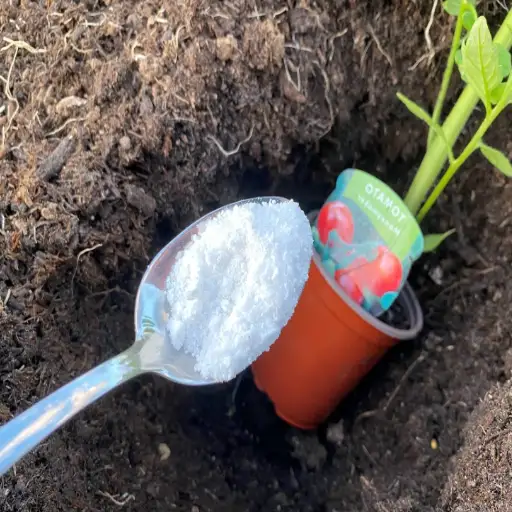
Using Epsom Salt for Houseplants
Houseplants can benefit greatly from care provided under the right conditions, and Epsom salt is no exception. A core part of plant nutrition is Magnesium, which helps with photosynthesis during the growth process, while Sulfur aids in protein synthesis. Correct usage of this chemical can boost plant health while more specifically aiding the formation of green leaves. While Magnesium is important for growth, it must be used precisely, as too much risks throwing off the balance of nutrients critical to the plant’s sustenance.
To increase the plant’s ability to absorb Epsom salt, dissolving it in water is often the simplest and most effective way. The salt should be mixed at bout 1 to 2 tablespoons per gallon, with this solution being applied once every 30 days. Doing so helps reduce the rate at which plants showing signs of deficiency, such as yellowing between veins, lose their leaves.
Epsom salt should not be used frequently as high amounts of Magnesium negatively alter Potassium and Calcium, leading to their decreased absorption. Using a balanced fertilizer allows a helpful lower bound to reduce fixation with measuring parameters. Also, Epsom salt offers no benefit to all plants indiscriminately, and hail can be hindered due to a lack of thorough understanding surrounding the plants. Research into the precise plant needs should be done preemptively before placing Epsom salt into a care plan.
Frequency of Epsom Salt Application in Potted Plants
With Epsom salt application in pot plants, a specific schedule tailored to each plant’s type, soil, and nutrient needs should be developed first. Using magnesium sulfate, otherwise known as Epsom salt, is helpful when magnesium deficiency is ascertained via soil testing or visually by yellowing leaves between green veins (interveinal chlorosis).
A solution of Epsom salt mixed at a ratio of 1 to 2 tablespoons per gallon of water is sufficient for most potted plants, especially during the active growing season, which is typically once a month. However, application beyond necessary amounts can lead to detrimental consequences affecting the soil’s nutrient balance and the health of the plants. It becomes necessary to observe the response of the plants to stress or signs of improvement after application.
Moreover, performing regular soil tests of nutrients along with following particular plant nutrient guidelines strengthens the reliability of Epsom salt application and prevents under- or overuse.
How to Apply Epsom Salt in the Garden
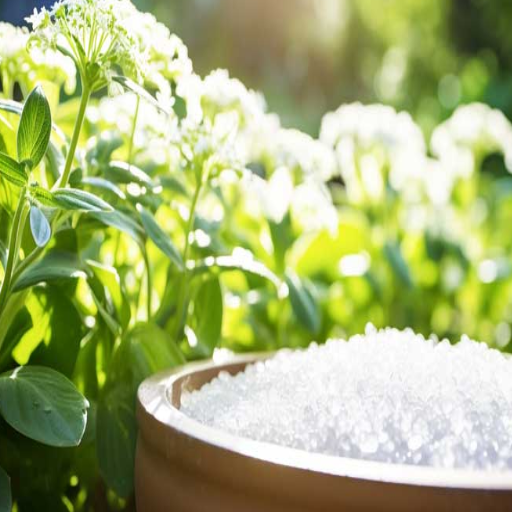
Methods for Applying Epsom Salt in the Garden
There are two ways to use Epsom salt in gardening – through the soil and using foliar spraying. Each method serves a different purpose based on specific plant nutrient needs and their environmental surroundings.
- Soil Application: The granular form of Epsom salt can be applied as a soil amendment by incorporating it at the base of the plant in the form of capsules. This encourages infusion of magnesium over time as the compound gets dissolved through irrigation or natural rainfall. It is advisable, for most plants, to administer one tablespoon of Epsom salt for every foot of plant height. However, it’s crucial to base the dosage on a soil test since too high magnesium levels would hinder calcium and potassium absorption.
- Foliar Spraying: Application through foliar spraying increases the speed of absorption since magnesium sulfate will soak directly into the leaves. To make a good foliar spray, one to two tablespoons of Epsom salt needs to be dissolved per gallon of water, no more than that. Foliage should be sprayed in the early morning or late evening when the sun is not blaring so that it does not get sunburnt. Acute magnesium deficiency gets awfully apparent in a few quarters and magnesium deficiency can be overcome with the aid of foliar spraying.
Post Epsom salt application, monitoring the plant health becomes essential to achieve the desired results. Constructing a reasonable approach to fertilization informed by soil, as well as plant tissue testing makes it easier to balance and avoid having too much or too little of nutrients coupled with growth stunting.
Sprinkle or Dissolve: The Best Way to Use Epsom Salt
For permanent adding of magnesium and sulfur, sprinkling dry Epsom salt crystals directly on the soil surface is highly recommended. This method will allow the salt to be absorbed as it dissolves over time from natural irrigation provided by either rain or manual watering. It is most effective for regions with persistent moisture or for plants with deep-root systems that need nutrients to be provided consistently over time.
Addressing acute magnesium deficiencies can be solved quickly by dissolving Epsom salt in water and using it as a foliar spray. This method allows nutrients to be directly absorbed through the leaves, enabling faster absorption than soil applications. It is often suggested to use a mixture of one tablespoon of Epsom salt per gallon of water for routine foliar feeding, but precise concentrations should be influenced by specific plant requirements and surrounding conditions.
Both methods are effective alone, but using them in a balanced fertilization plan with pre-planned guidelines ensures reliable magnesium levels without a surplus and remaining usable soil nutrients. Testing soil and analyzing plant tissues are still crucial in deciding how often and when to apply these with modern farming approaches.
Precautions When Using Epsom Salt in the Garden
As with most things in life, moderation is key when using Epsom salt in gardening, as it can affect a plant’s health adversely. If used too much, Epsom salt can create a buildup of magnesium in the soil that interferes with the absorption of vital nutrients like potassium and calcium, which can be harmful. Such an imbalance can be damaging to plant growth and yield due to a lack of proper nutrients. Furthermore, Epsom salt should be adjusted based on the needs of certain plant species, as not all flora derive the same benefits from magnesium supplementation.
Proper soil testing helps a gardener or farmer figure out the magnesium deficiencies needed for crops before planting them. Having an immense amount of magnesium in the soil could lead to a negative impact on the other nutrients in the soil and its quality over time. In addition, Epsom salt, like many soluble water forms of magnesium, can leach through the soil, especially if it has sand or is porous, making it less effective over time. This can be a concern because it can lead to pollution in groundwater.
To reduce the possible negative effects, follow the documented scientific instructions for dosage and carrot to apply, usually not more than a tablespoon per gallon of water for foliar applications, or a single application for soil drenching per month. Do not blanket use Epsom salt without the tests needed for confirmation. Use of salts without restriction can be more dangerous than beneficial, and by using a controlled and informed approach, gardeners can reap the benefits of Epsom salt while maintaining plant health.
References
Frequently Asked Questions (FAQs)
Q: How do I use Epsom salt on plants?
A: To use Epsom salt on plants, dissolve one tablespoon per gallon of water and apply it as a foliar spray or around the base of the plants every two to four weeks. This helps plants absorb essential nutrients more effectively.
Q: Is Epsom salt good for all types of plants?
A: While many plants benefit from Epsom salt treatments, it is important to note that some plants don’t like Epsom salts. Plants like peppers and tomatoes often respond well, but always check specific plant requirements before use.
Q: How often should I put Epsom salt on my pepper plants?
A: For pepper plants, you can put Epsom salt on them every two weeks. Dissolve two tablespoons per gallon of water and apply it around the base of the plants to support healthy growth.
Q: Can I sprinkle Epsom salt directly on garden soil?
A: Yes, you can sprinkle Epsom salt directly on garden soil. Use about one cup of Epsom salt per 100 square feet, but ensure it is mixed well into the soil for plants to absorb the nutrients effectively.
Q: Will Epsom salt kill my plants if used incorrectly?
A: Epsom salt is generally safe, but overuse can lead to nutrient imbalances. It’s important to follow recommended dosages, like using one tablespoon per gallon of water, to avoid harming your plants.
Q: How can I make an Epsom salt solution for plants?
A: To make an Epsom salt solution for plants, dissolve one tablespoon of Epsom salt in a gallon of water. This solution can be used as a foliar spray or applied around the base of plants.
Q: Are there specific plants that thrive with Epsom salt?
A: Plants that thrive with Epsom salt include peppers, tomatoes, and roses. These plants absorb magnesium and sulfur from Epsom salt, which are crucial for their growth and development.
Q: How do I use Epsom salt for tomatoes?
A: To use Epsom salt for tomatoes, dissolve one tablespoon per gallon of water and apply it around the base of the tomato plants every two to four weeks. This helps in preventing blossom end rot and promotes overall plant health.
Q: What are the benefits of using a foliar spray with Epsom salt?
A: Using a foliar spray with Epsom salt allows plants to absorb magnesium and sulfur directly through their leaves, promoting better nutrient uptake and healthier plant growth.

